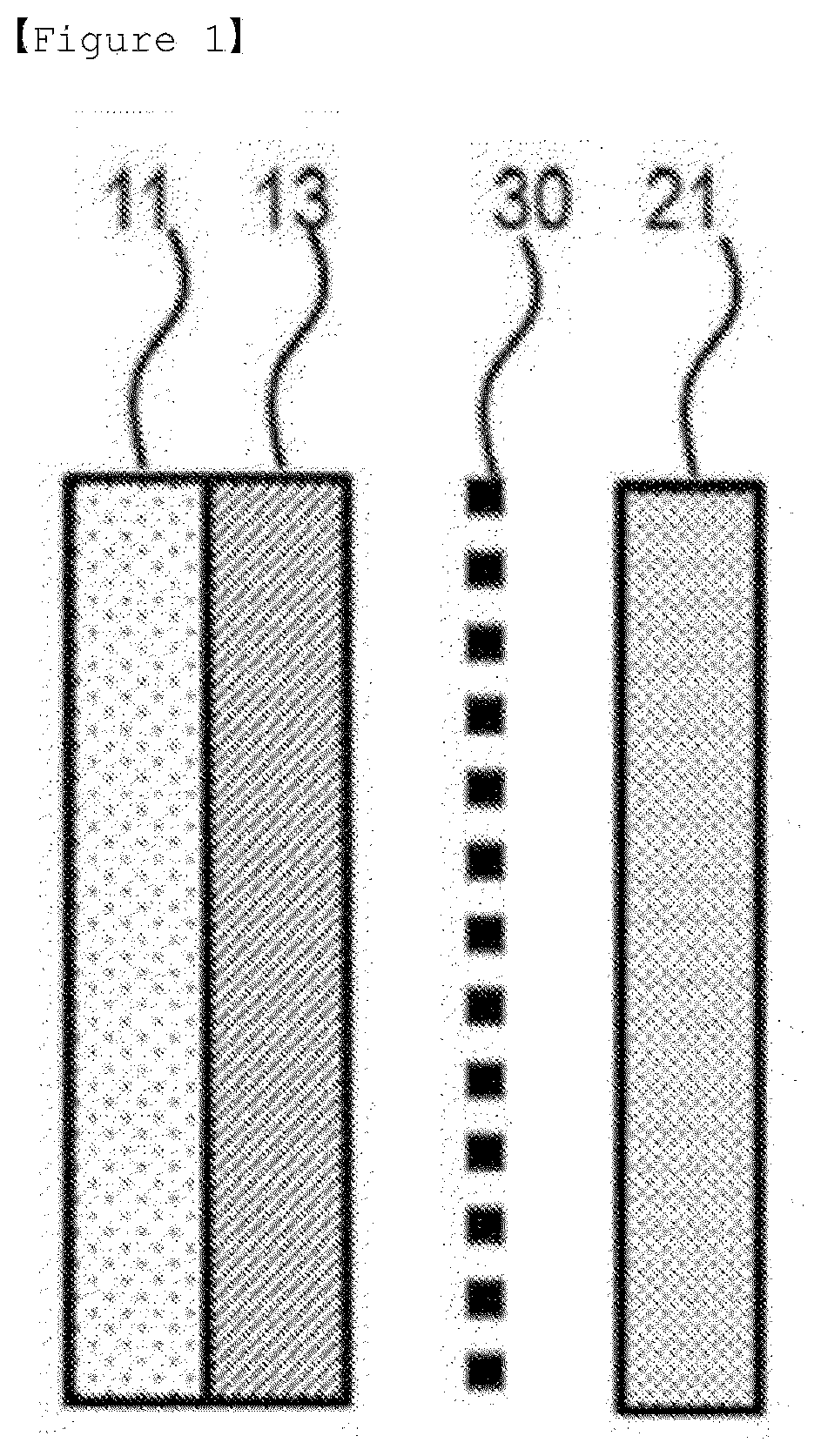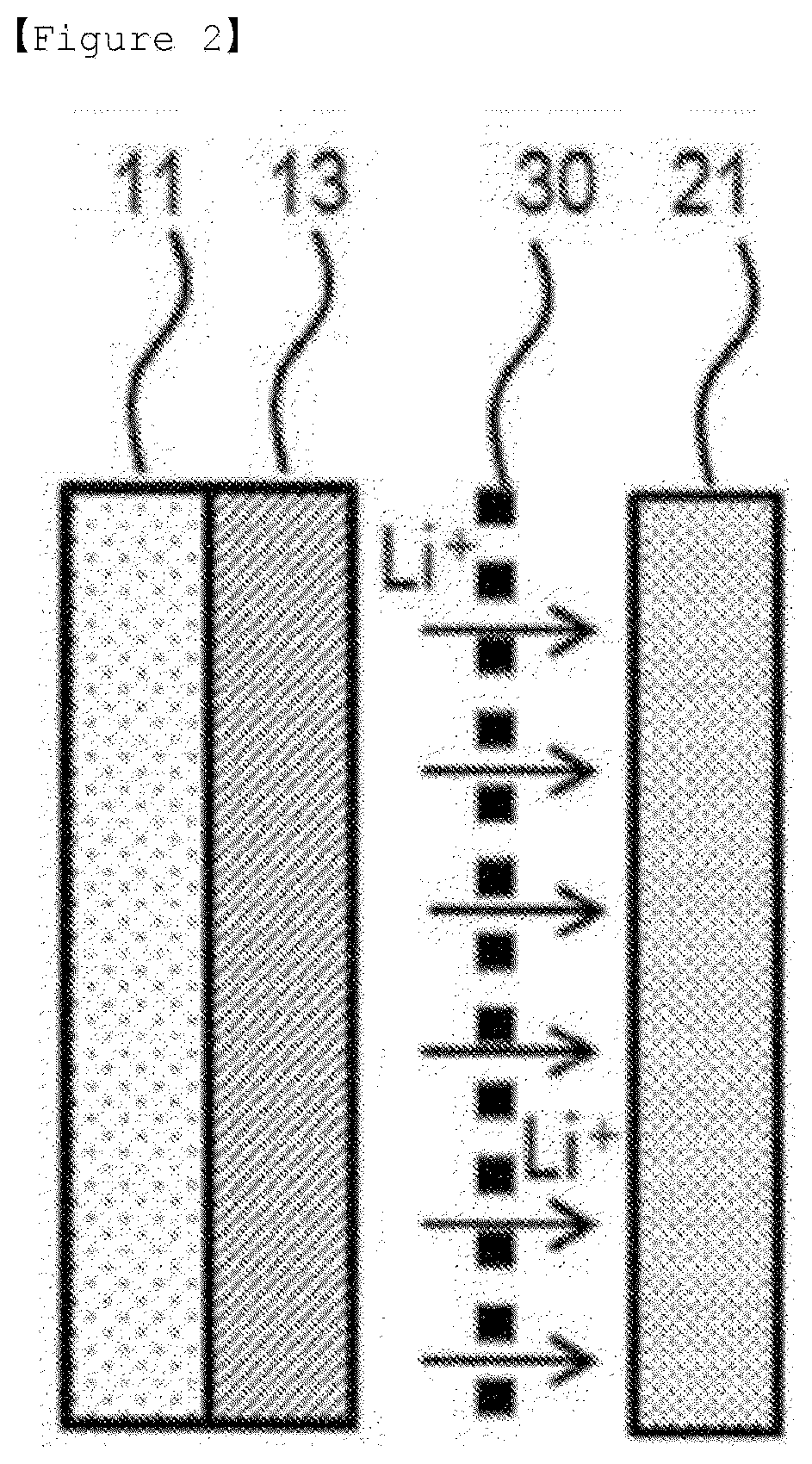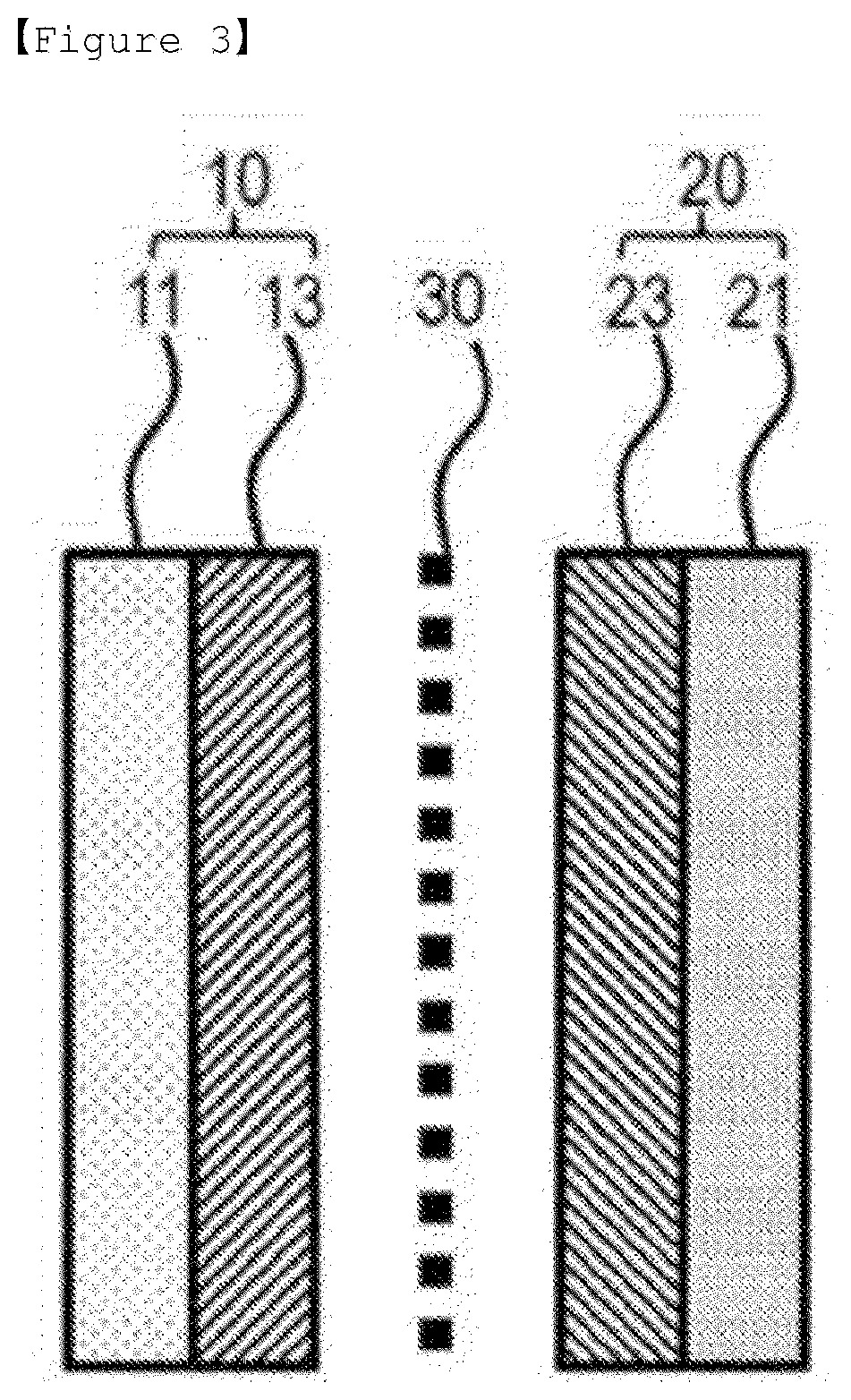Lithium secondary battery
a secondary battery and lithium technology, applied in the field of lithium secondary batteries, can solve the problems of increasing electric resistance, affecting the production and use of basic electric elements, and unable to fundamentally suppress the formation of surface oxide layers, so as to reduce current density, enhance cycle lifetime properties, and suppress surface oxide layers.
- Summary
- Abstract
- Description
- Claims
- Application Information
AI Technical Summary
Benefits of technology
Problems solved by technology
Method used
Image
Examples
example 2
re of Negative Electrode Free Battery Provided with PVdF-HFP Protective Film
[0141](1) Preparation of Positive Electrode
[0142]After mixing LiCoO2 (LCO):Super-P:binder (PVdF) in a weight ratio of 95:2.5:2.5 in 30 ml of N-methyl-2-pyrrolidone, Li2NiO2 (L2N) was added thereto in a weight ratio of 20% with respect to the LCO. Subsequently, each was mixed for 30 minutes using a paste face mixer to prepare a slurry composition. Herein, the weight of the added LCO was 15 g.
[0143]Subsequently, the prepared slurry composition was coated on a current collector (Al foil, thickness 20 μm), and the result was dried for 12 hours at 130° C. to prepare a positive electrode.
[0144](2) Preparation of Protective Film-Formed Negative Electrode Current Collector
[0145]A solution for forming a protective film was prepared by mixing PVdF-HFP to an acetone solvent so as to have a concentration of 10% by weight.
[0146]The solution for forming a protective film was coated on a Cu foam-type Cu current collector h...
example 3
re of Negative Electrode Free Battery
[0151]A negative electrode free battery was manufactured in the same manner as in Example 1 except that the Cu current collector was employed to have porosity of 50%.
example 4
re of Negative Electrode Free Battery
[0152]A negative electrode free battery was manufactured in the same manner as in Example 1 except that the Cu current collector was employed to have porosity of 90%.
PUM
| Property | Measurement | Unit |
|---|---|---|
| thickness | aaaaa | aaaaa |
| porosity | aaaaa | aaaaa |
| voltage | aaaaa | aaaaa |
Abstract
Description
Claims
Application Information
 Login to View More
Login to View More - R&D
- Intellectual Property
- Life Sciences
- Materials
- Tech Scout
- Unparalleled Data Quality
- Higher Quality Content
- 60% Fewer Hallucinations
Browse by: Latest US Patents, China's latest patents, Technical Efficacy Thesaurus, Application Domain, Technology Topic, Popular Technical Reports.
© 2025 PatSnap. All rights reserved.Legal|Privacy policy|Modern Slavery Act Transparency Statement|Sitemap|About US| Contact US: help@patsnap.com



